| Listing 1 - 10 of 40 | << page >> |
Sort by
|
Dissertation
Year: 2002 Publisher: Liège : Université de Liège. Faculté de Médecine. Service de Chirurgie abdominale et de Transplantation,
Abstract | Keywords | Export | Availability | Bookmark
 Loading...
Loading...Choose an application
- Reference Manager
- EndNote
- RefWorks (Direct export to RefWorks)
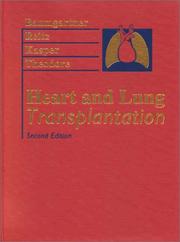
ISBN: 9780721673639 0721673635 Year: 2002 Publisher: Philadelphia, Pa.: Saunders,
Abstract | Keywords | Export | Availability | Bookmark
 Loading...
Loading...Choose an application
- Reference Manager
- EndNote
- RefWorks (Direct export to RefWorks)
Heart Transplantation --- Lung Transplantation --- Heart-Lung Transplantation --- Heart --- Lungs
Dissertation
ISBN: 9080713120 Year: 2002 Publisher: Brussel Vrije Universiteit Brussel. Faculteit van de Geneeskunde en Farmacie
Abstract | Keywords | Export | Availability | Bookmark
 Loading...
Loading...Choose an application
- Reference Manager
- EndNote
- RefWorks (Direct export to RefWorks)
Stem Cell Transplantation --- Hematology --- Transplantation, Stem Cell --- Stem Cell Transplantations --- Transplantations, Stem Cell --- Stem Cells --- transplantation --- Theses
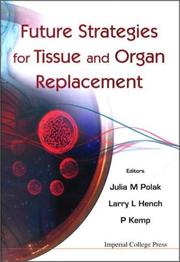
ISBN: 1281869422 9786611869427 1860949649 9781860949647 9781281869425 1860943101 9781860943102 186094311X 9781860943119 Year: 2002 Publisher: London : River Edge, NJ : Imperial College Press ; Distributed by World Scientific Pub.,
Abstract | Keywords | Export | Availability | Bookmark
 Loading...
Loading...Choose an application
- Reference Manager
- EndNote
- RefWorks (Direct export to RefWorks)
Several textbooks have been published that discuss just one or two of the areas concerning tissue and organ replacement. This important book brings together all the different approaches for the first time. The contributors are established experts in their respective fields.The multidisciplinary nature of the text will appeal to students, scientists and clinicians from a wide spectrum of disciplines who are considering a future in organ replacement therapy, as well as to those who have so far only learnt of the developments in organ transplantation or replacement in the lay media. The field is
Transplantation immunology. --- Transplantation of organs, tissues, etc. --- Medical transplantation --- Organ transplantation --- Organ transplants --- Organs (Anatomy) --- Surgical transplantation --- Tissue transplantation --- Tissues --- Transplant surgery --- Transplantation surgery --- Transplants, Organ --- Surgery --- Preservation of organs, tissues, etc. --- Procurement of organs, tissues, etc. --- Cellular immunity --- Immunology --- Histocompatibility --- Immunological tolerance --- Transplantation --- Immunological aspects
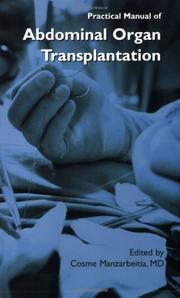
ISBN: 1280201134 9786610201136 0306476274 0306466392 Year: 2002 Publisher: New York, NY : Springer,
Abstract | Keywords | Export | Availability | Bookmark
 Loading...
Loading...Choose an application
- Reference Manager
- EndNote
- RefWorks (Direct export to RefWorks)
Abdominal organ transplantation, specifically liver, kidney and pancreatic transplantation, has experienced a tremendous growth over the last two decades. With this growth comes a need for a general, standardized introduction for those healthcare professionals involved with this branch of medicine. This manual is a readily-available, concise reference for the professional involved in the field of abdominal organ transplantation as well as the lay person. The Practical Manual of Abdominal Organ Transplantation covers the latest developments in organ procurement and transplantation as well as newer approaches to the organ shortage and the increasing use of liver donation. This practical manual serves as an invaluable tool for those in the medical profession, whether a student, resident or practitioner, working with abdominal organ transplantation and its effects on their patients. This manual includes concise and directed topics covering: - end-stage abdominal organ disease;.
Transplantation of organs, tissues, etc. --- Abdomen --- Liver --- Surgery --- Transplantation --- Transplantation of organs, tissu. --- Emerging infectious diseases. --- Medical Education. --- Anesthesiology. --- Transplant Surgery. --- Abdominal Surgery. --- Infectious Diseases. --- Surgery. --- Surgical transplantation. --- Abdominal surgery. --- Infectious diseases. --- Medical education. --- Anaesthesiology --- Medical personnel --- Professional education --- Abdominal surgery --- Laparotomy --- Medical transplantation --- Organ transplantation --- Organ transplants --- Organs (Anatomy) --- Surgical transplantation --- Tissue transplantation --- Tissues --- Transplant surgery --- Transplantation surgery --- Transplants, Organ --- Preservation of organs, tissues, etc. --- Procurement of organs, tissues, etc. --- Education --- Transplantation.
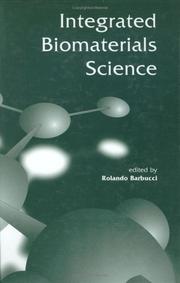
ISBN: 1280200715 9786610200719 0306475839 0306466783 Year: 2002 Publisher: New York : Kluwer Academic Publishers,
Abstract | Keywords | Export | Availability | Bookmark
 Loading...
Loading...Choose an application
- Reference Manager
- EndNote
- RefWorks (Direct export to RefWorks)
Integrated Biomaterials Science provides an intriguing insight into the world of biomaterials. It explores the materials and technology which have brought advances in new biomaterials, highlighting the way in which modern biology and medicine are synergistically linked to other key scientific disciplines-physics, chemistry, and engineering. In doing so, Integrated Biomaterials Science contains chapters on tissue engineering and gene therapy, standards and parameters of biomaterials, applications and interactions within the industrial world, as well as potential aspects of patent regulations. Integrated Biomaterials Science serves as a comprehensive guide to understanding this dynamic field, yet is designed so that chapters may be read and understood independently, depending on the needs of the reader. Integrated Biomaterials Science is attractive to a broad audience interested in a deeper understanding of this evolving field, and serves as a key resource for researchers and students of biomaterials courses, providing all with an opportunity to probe further.
Biomedical materials. --- Medical instruments and apparatus. --- Artificial organs. --- Transplantation of organs, tissues, etc. --- Biomedical engineering. --- Surfaces (Physics). --- Transplantation of organs, tissu. --- Orthopedics. --- Biomedical Engineering and Bioengineering. --- Characterization and Evaluation of Materials. --- Transplant Surgery. --- Materials science. --- Surgical transplantation. --- Orthopaedics --- Orthopedia --- Surgery --- Medical transplantation --- Organ transplantation --- Organ transplants --- Organs (Anatomy) --- Surgical transplantation --- Tissue transplantation --- Tissues --- Transplant surgery --- Transplantation surgery --- Transplants, Organ --- Preservation of organs, tissues, etc. --- Procurement of organs, tissues, etc. --- Material science --- Physical sciences --- Clinical engineering --- Medical engineering --- Bioengineering --- Biophysics --- Engineering --- Medicine --- Transplantation
Book
Year: 2002 Publisher: Bruxelles: UCL,
Abstract | Keywords | Export | Availability | Bookmark
 Loading...
Loading...Choose an application
- Reference Manager
- EndNote
- RefWorks (Direct export to RefWorks)
This retrospective study assesses the outcome after intensive chemotherapy followed by stem cell transplantation compared to conventional chemotherapy in patients suffering from acute myeloid leukemia or myelodysplastic syndrome with poor-risk karyotype, i.e. monosomy 5 or 7 and/or deletion of the long arm of chromosome 5 or 7.
We compare 3 groups of patients: the first contains 16 patients with poor-risk karyotype who were treated with stem cell transplantation. The second contains 11 patients with poor-risk karyotype treated with conventional chemotherapy. The third group contains 14 patients with intermediate risk (normal) karyotype treated with stem cell transplantation.
The results of intensive chemotherapy followed by stem cell transplantation are compared to those of conventional chemotherapy in terms of response and survival (overall and disease-free) in patients with poor-risk karyotype : the remission rate is significantly higher in the transplantation group. The relapse rate, the overall survival and the disease-free survival are not different between the 2 groups.
The results of intensive chemotherapy followed by stem cell transplantation are compared in terms of response and survival (overall and disease-free) in patients with poor-risk vs intermediate-risk karyotype : the remission rate is not different between the 2 groups but the relapse rate is significantly higher in the poor-risk patients. The overall and disease-free survival are better in intermediate-risk group. By multivariate analysis, the disease-free survival is influenced by the age at the time of treatment.
In summary, this study does not demonstrated improved survival in poor-risk patients treated with intensive chemotherapy followed by stem cell transplantation. However the remission rate was improved after intensive chemotherapy followed by stem cell transplantation. The intermediate-risk patients have abetter survival and a lower probability of relapse than poor-risk patients Cette étude rétrospective évalue les résultats de traitements chimio thérapeutiques intensifs avec greffe de cellules souches par rapport à des traitements conventionnels chez des patients à haut risqué atteints de leucémie myéloïde aiguë ou de myelodysplasie, portant une anomalie du caryotype défavorable : monosomie ou délétion d’un segment du bras long des chromosomes 5 et/ ou 7.
Trois groupes sont étudiés : le premier est composé de 16 patients à caryotype défavorable traités par greffe, le deuxième comporte 11 patients à caryotype défavorable traités par chimiothérapie conventionnelle et le troisième comprend 14 patients à pronostic intermédiaire (caryotype normal) traité par greffe de cellules souches.
Les résultats des traitements intensifs avec greffe de cellules souches sont comparés à la chimiothérapie conventionnelle en terme de réponse et de survie (globale et sans maladie) chez les patients à caryotype défavorable : le taux de rémission est significativement meilleur chez les patients greffés ; quant au taux de rechute, à la survie globale et à la survie sans maladie, ils ne diffèrent pas d’un groupe à l’autre.
Les résultats des traitements intensifs avec greffe de cellules souches sont comparés en terme d’impact du type d’anomalie cytogénétique sur la réponse au traitement et la survie chez les patients à caryotype défavorable et des patients à caryotype intermédiaire : le taux de rémission ne diffère pas d’un groupe à l’autre, mais le taux de rechutes est significativement plus important dans le groupe de patients à caryotype défavorable. La survie globale et la survie sans maladie sont meilleures chez les patients à caryotype intermédiaire. L’analyse multivariée indique que la survie sans maladie est influencée par l’âge au traitement.
En résumé, les traitements intensifs avec greffe de cellules souches ne confèrent pas d’avantage significatif de survie chez les patients à caryotype défavorable. Le taux de rémission est cependant supérieur après traitement intensif.
Les patients à caryotype intermédiaire traités par chimiothérapie intensive suivie de greffe de cellules souches ont moins de rechutes et une meilleure survie que les patients à caryotype défavorable ayant reçu le même type de traitement
Leukemia, Myeloid --- Neural tube defects --- Drug Therapy --- Cell Transplantation
Book
Year: 2002 Publisher: Bruxelles: UCL,
Abstract | Keywords | Export | Availability | Bookmark
 Loading...
Loading...Choose an application
- Reference Manager
- EndNote
- RefWorks (Direct export to RefWorks)
The serum level of C-reactive protein (CRP), an acute phase reactant, is a predictor of the cardiovascular risk in the general population and in dialyzed patient (in the latter CRP level is frequently elevated). By contrast, whether CRP serum level is predictive of cardiovascular risk after renal transplantation is unknown. In this study, we assessed the potential relationship between the levels of CRP, albumin, prealbumin and IGF-1 on the day of transplantation on the one hand, and the subsequent development of cardiovascular atherosclerotic events on the other hand.
We included all 281 residents in Belgium, recipients of an isolated first cadaveric renal TP between 01/01/85 and 31/12/95 in whom no systemic inflammation disease was active at the time of transplantation could be retrieved. On these sera, the level of CRP, albumin, prealbumin, and IGF-1 was measured. We recorder all cardiovascular atherosclerotic events from the day of transplantation until 31/12/00 (or death). These events were retrieved from medical charts and defined by strict, specific criteria of ischemic heart disease, cerebrovascular disease or peripheral disease.
Univariate analysis showed that the post transplantation development of cardiovascular event(s) was associated with older age, pre transplantation diabetes, a history pre transplantation cardiovascular event, a high CRP level, a longer time spent on dialysis and a higher frequency of tacrolimus (rather than cyclosporine) treatment. Nutritional markers were not predictive of post transplantation cardiovascular event.
In multivariate analysis, three parameters were independent predictors of cardiovascular risk after transplantation: a history of diabetes (p=0.0001), pre transplantation CRP level (p= 0.0001) and dialysis duration (p=0.0001). CRP level at the time of transplantation was significantly associated with a history of pre transplantation event(s). This suggests that the level reflects the extent and/or “activity” of atherosclerosis.
Univariate analysis further showed that a higher CRP level was associated with an increased risk of post transplantation death and risk of resuming dialysis. However, in multivariate analysis, death was predicted by a history of pre transplantation cardiovascular event whereas the need to resume dialysis was by younger age and non Caucasian race.
In conclusion, we demonstrate for the first time that the level of CRP, measured immediately before renal transplantation, is predictive of the risk post transplantation cardiovascular event.
In contrast, the level of various nutritional markers was not predictive of post transplantation evolution Le taux de la C-réactive protéine (CRP), un marqueur inflammatoire, est un bon prédicteur du risque cardiovasculaire dans la population générale, et chez les patients en dialyse, chez lesquels le taux CRP est souvent élevé. Par contre, aucune étude ne s’est intéressée au lien éventuel entre le taux de CRP et le risque cardiovasculaire après la transplantation rénale. Notre travail vise donc à déterminer s’il existe un lien entre les taux de CRP, d’albumine, de préalbumine et d’IGF-1 (paramètres nutritionnels) du jour de la transplantation d‘une et la survenue d’événement(s) cardiovasculaire(s) après la greffe rénale d’autre part.
La population de notre étude se compose de 281 patients résidents, ayant bénéficié entre 1985 et 1995 d’une première greffe rénale isolée, de cadavre, en l’absence de maladie systémique active et pour lesquels nous avons retrouvé un sérum. Le suivi est réalisé jusqu’au 31/12/2000 ou jusqu’au décès. L’étude s’est sur le dosage de diverses substances, à savoir la CPR, l’albumine, la préalbumine et l’IGF-1, réalisés sur le sérum du jour de la greffe rénale. Le devenir des patients est évalué par l’enregistrement d’événement(s) cardiovasculaire(s) athéromateux, défini(s) sur base de critères très spécifiques de cardiopathie ischémique, de maladie cérébrovasculaire, ou de vasculopathie périphérique.
En uni variée, les patients ayant présenté un événement sont plus âgés, ont plus fréquemment un diabète et un antécédent d’événement(s) cardiovasculaire(s), une CPR élevée, une durée de dialyse plus longue et un traitement de tacrolimus plus fréquemment que dans le groupe sans événement. En multi variée, trois paramètres sont des prédicteurs indépendants du risque cardiovasculaire post-TP : un antécédent de diabète pré-T (p=0.0001), la taux de CPR (p=0.0001) et la durée de dialyse (p=0.0001). Les marqueurs nutritionnels sont similaires dans les deux groupes. Un lien significatif est également mis en évidence entre la CRP du jour de la greffe et les événements cardiovasculaire pré-greffe. Ceci suggère que la CRP est un bon reflet de l’athéromatose. Une corrélation entre le décès et le CRP, et entre la reprise en dialyse, et la CPR est présent uniquement en analyse uni variée. Les paramètres significatifs en multi variée pour la reprise en dialyse sont le jeune âge et la race non caucasienne, et pour le décès, l’antécédent d’événement cardiovasculaire pré-greffe.
Les résultats de cette étude démontrent pour la première fois un lien entre la CPR du jour de la transplantation et la survenue d’événement(s) cardiovasculaire(s) athéromateux chez les greffés rénaux. Par contre, les marqueurs nutritionnels ne sont pas associés, dans cette cohorte, à la survenue d’événement(s) cardiovasculaire(s)
Insulin-Like Growth Factor I --- Kidney Transplantation --- Albumins --- Prealbumin --- Somatomedins
Dissertation
ISBN: 9052783454 Year: 2002 Publisher: Maastricht Universitaire pers
Abstract | Keywords | Export | Availability | Bookmark
 Loading...
Loading...Choose an application
- Reference Manager
- EndNote
- RefWorks (Direct export to RefWorks)
Kidney Failure, Chronic --- Aged --- Bioethics --- Kidney Transplantation --- therapy
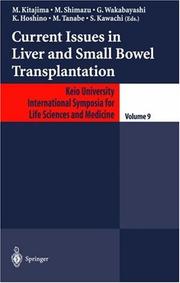
ISBN: 4431703322 4431680055 4431678891 Year: 2002 Publisher: Tokyo Springer
Abstract | Keywords | Export | Availability | Bookmark
 Loading...
Loading...Choose an application
- Reference Manager
- EndNote
- RefWorks (Direct export to RefWorks)
In Japan, cadaveric donor liver transplantation is not common even though cadaveric organ transplantation was legally established in 1998. In contrast, the number of living donor liver transplantations is increasing, with more than 1700 cases at 43 Japanese institutes by November 2001. Indications for and have become living donor liver transplantation are widening in Japan similar to those for cadaveric donor liver transplantation in the United States and Europe. At the same time, split liver transplantation from cadaveric donors shares some technical aspects with living donor liver transplantation. Remarkable progress has been reported recently, and thus it was an auspicious time to hold a symposium on "Current issues in liver/small bowel transplantation" in Japan. We were honored to hold a very fruitful symposium sponsored by the Keio University Medical Science Fund and to bring together top-rank transplant surgeons from Japan and other countries. It was a productive and rewarding time for all participants. We were able to share our experience through excellent presentations followed by active discussions and insightful com ments. At the symposium, we focused on current issues in liver transplanta tion such as widening indications for viral hepatitis and malignant tumors. We also discussed technical aspects and physiological problems in split/iiving donor liver transplant, novel strategies in immunosuppression, and the current status and future prospects in small bowel transplantation. This book contains the papers from all the distinguished guest speakers, focusing on the topics discussed at the symposium.
Liver Transplantation --- Living Donors. --- Hepatitis, Viral, Human --- Liver Neoplasms --- Immunosuppression --- Intestine, Small --- -Liver --- -Transplantation of organs, tissues, etc --- Medical transplantation --- Organ transplantation --- Organ transplants --- Organs (Anatomy) --- Surgical transplantation --- Tissue transplantation --- Tissues --- Transplants, Organ --- Surgery --- Preservation of organs, tissues, etc. --- Procurement of organs, tissues, etc. --- Abdomen --- Biliary tract --- Small intestine --- Intestines --- Donors, Living --- Donor, Living --- Living Donor --- Transplantation --- methods. --- surgery. --- Liver --- Transplantation of organs, tissues, etc. --- Liver neoplasms --- Living Donors --- methods --- surgery --- transplantation --- Transplantation of organs, tissues, etc --- Methods --- Surgical transplantation. --- Transplant Surgery. --- Transplant surgery --- Transplantation surgery --- Anti-Rejection Therapy --- Therapy, Anti-Rejection --- Therapy, Antirejection --- Antirejection Therapy --- Immunosuppressive Therapy --- Anti Rejection Therapy --- Anti-Rejection Therapies --- Antirejection Therapies --- Immunosuppression Therapies --- Immunosuppressions --- Immunosuppressive Therapies --- Therapies, Immunosuppression --- Therapies, Immunosuppressive --- Therapy, Immunosuppression --- Therapy, Immunosuppressive --- Immune Tolerance --- Transplantation Immunology
| Listing 1 - 10 of 40 | << page >> |
Sort by
|

 Search
Search Feedback
Feedback About
About Help
Help News
News